Mythical Fiery Bird Phoenix In Mythologies Of Many Ancient Cultures
A. Sutherland - AncientPages.com - Roman, Greek or Egyptian mythologies speak about an amazing mythical firebird, Phoenix, a symbol of Sun, immortality, rebirth, resurrection, and eternal life.
Phoenix is known in various forms and by various names throughout the Middle East, the Mediterranean, and Europe. This mythical creature has its counterpart in China, Japan, and India, and many appearances of Phoenix have been created but all of them have similar significance. They are also all alike.
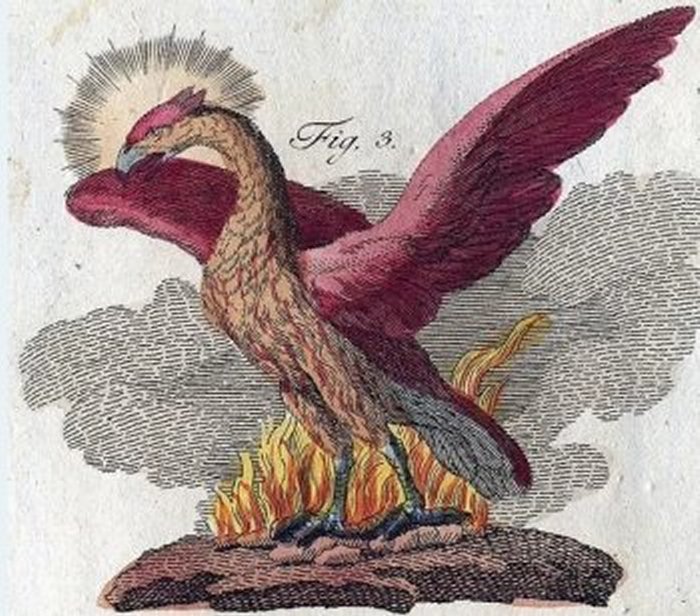
A phoenix depicted in a book of legendary creatures by FJ Bertuch (1747–1822) - Public Domain
However, the bird's archetype is the Egyptian Bennu (or Benu) that appeared mainly in the myths of Osiris and Ra. In Egypt, the great Bennu was also called Forever Rising Sun.
Some ancient accounts mention the Bennu bird as a form of the creator Atum.
In the "Pyramid Texts", the Bennu symbolized Sun God Atum of Heliopolis and used to appear as a yellow wagtail, and its name was "to rise in brilliance".
A myth from Heliopolis, on the other hand, says that the Sun had first risen in the form of a sacred bird Bennu and later became associated with the Phoenix.
The Bennu bird is known to us from Greek myth as the Phoenix that always lived 500 years. When the time came, Phoenix built a nest of nard, myrrh and cinnamon and set fire to itself.
Out of ashes, a new, young Phoenix was reborn.
In another association, the Bennu was the sacred "ished" (a persea tree), considered to be the Tree of Life, especially the ished tree at Heliopolis. This tree, often depicted during the New Kingdom, was protected from dangerous Apophis by the Great Cat of Heliopolis, sacred to god Ra.
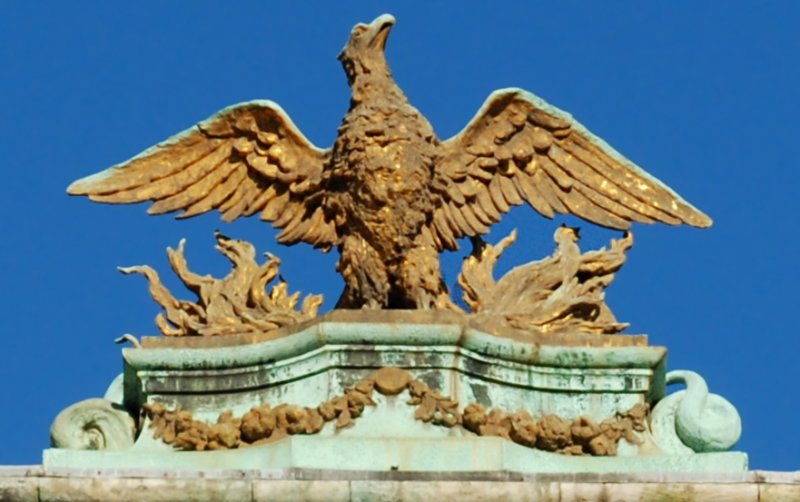 The phoenix surmounts the Maison de la Louve in Brussels. Image credit: EmDee - CC BY-SA 4.0
The phoenix surmounts the Maison de la Louve in Brussels. Image credit: EmDee - CC BY-SA 4.0
"My purity is as that of the Bennu bird, the bright Phoenix whose nest is upon the stone persea-tree,
the obelisk at Heliopolis. Behold me, I have come to you without sin, without guilt, without evil... So preserve me from Apep [Apophis] the 'Eater-up of Souls'..." ("The Book of Thoth", The Land of the Dead)
This appearance of the Benu changes again in the "Book of Dead", and the bird has its usual form as a grey heron.
Despite all these differences, the Bennu symbolizes rebirth and good fortune.
The Greek historian Herodotus wrote about Egypt in the 5th century BC, but he was not particularly convinced that the fiery bird Phoenix really existed.
Nevertheless, he described one legend associated with the creature. Phoenix, a huge eagle-like bird with red, gold, and orange feathers came to Egypt from the Arabian Peninsula every 500 years, bringing in a ball of myrrh remains of his predecessor, which was composed on the altar of the sun at Heliopolis.
At the time, the legend says, there was never more than one Phoenix alive (never two of them like in myths of Asia).
The fiery bird Phoenix has been associated with the Moon because it burns forever in the new moon.
Written by – A. Sutherland - AncientPages.com Senior Staff Writer
Copyright © AncientPages.com All rights reserved. This material may not be published, broadcast, rewritten or redistributed in whole or part without the express written permission of AncientPages.com
Expand for referencesR. L. Green, Tales of Ancient Egypt
J. H. Breasted, Ancient Records of Egypt, Historical Documents
More From Ancient Pages
-
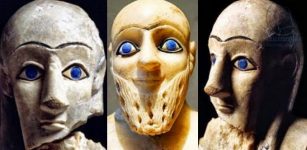 Mysterious Sumerian Statues With Big Blue Eyes – A Sign From The Gods
Civilizations | Feb 23, 2017
Mysterious Sumerian Statues With Big Blue Eyes – A Sign From The Gods
Civilizations | Feb 23, 2017 -
 Lost Mayan City Hidden Deep In The Peten Jungle Discovered By Expedition Team
Archaeology | Mar 21, 2022
Lost Mayan City Hidden Deep In The Peten Jungle Discovered By Expedition Team
Archaeology | Mar 21, 2022 -
 Arachne – Spider Woman Who Challenged Goddess Athena And Was Punished
Featured Stories | Dec 5, 2018
Arachne – Spider Woman Who Challenged Goddess Athena And Was Punished
Featured Stories | Dec 5, 2018 -
 Ancient Irish Practiced Special Burial Rituals Such As Dismemberment Of Bodies
Archaeology | Sep 18, 2017
Ancient Irish Practiced Special Burial Rituals Such As Dismemberment Of Bodies
Archaeology | Sep 18, 2017 -
 Why Are Apples So Important During Halloween?
Ancient History Facts | Oct 30, 2024
Why Are Apples So Important During Halloween?
Ancient History Facts | Oct 30, 2024 -
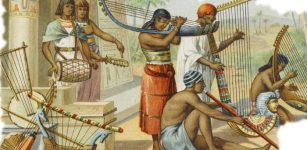 How Important Was Music In Ancient Egypt?
Ancient History Facts | Jan 16, 2021
How Important Was Music In Ancient Egypt?
Ancient History Facts | Jan 16, 2021 -
 Mystery Of Moses’ Double Mask, Dramatic Personality Change And The Hidden Prophet – What Did Really Happen On Mount Sinai?
Ancient Mysteries | Jun 25, 2018
Mystery Of Moses’ Double Mask, Dramatic Personality Change And The Hidden Prophet – What Did Really Happen On Mount Sinai?
Ancient Mysteries | Jun 25, 2018 -
 Michelangelo’s Hidden Secrets Under The Medici Chapel
Featured Stories | Jul 16, 2019
Michelangelo’s Hidden Secrets Under The Medici Chapel
Featured Stories | Jul 16, 2019 -
 Viking Ragnar Lodbrok Wanted To Kill His Son Ivar The Boneless
Featured Stories | Jun 19, 2017
Viking Ragnar Lodbrok Wanted To Kill His Son Ivar The Boneless
Featured Stories | Jun 19, 2017 -
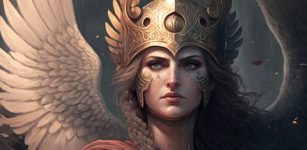 Troublemaker Eris: Greek Deity That Ignited Hatred Among All
Featured Stories | Apr 11, 2024
Troublemaker Eris: Greek Deity That Ignited Hatred Among All
Featured Stories | Apr 11, 2024 -
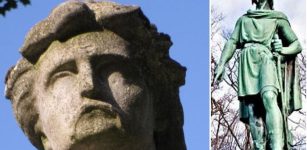 Rollo: Viking Sea Lord, Chieftain, Lone Wolf And The First Ruler Of Normandy
Featured Stories | Dec 6, 2023
Rollo: Viking Sea Lord, Chieftain, Lone Wolf And The First Ruler Of Normandy
Featured Stories | Dec 6, 2023 -
 DNA Study Of Remains At Delaware Site Find Kinship Among European Settlers, African Slaves
Archaeology | Aug 3, 2023
DNA Study Of Remains At Delaware Site Find Kinship Among European Settlers, African Slaves
Archaeology | Aug 3, 2023 -
 Scientists Closer To Solving The Mystery Of When Animals Evolved
Evolution | Jul 6, 2023
Scientists Closer To Solving The Mystery Of When Animals Evolved
Evolution | Jul 6, 2023 -
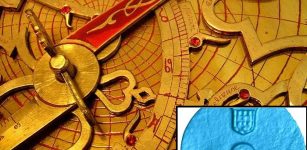 World’s Oldest Marine Navigation Tool Was A Sophisticated Astrolabe
Archaeology | Oct 25, 2017
World’s Oldest Marine Navigation Tool Was A Sophisticated Astrolabe
Archaeology | Oct 25, 2017 -
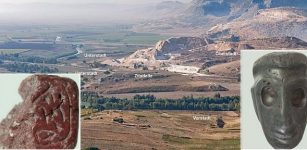 Bronze Age And Iron Age City Complex Once Known As Kummanni Unearthed In Turkey
Archaeology | Dec 4, 2018
Bronze Age And Iron Age City Complex Once Known As Kummanni Unearthed In Turkey
Archaeology | Dec 4, 2018 -
 Evidence Of Copper Processing Unearthed At Archaeological Site In Oman
Archaeology | Mar 6, 2024
Evidence Of Copper Processing Unearthed At Archaeological Site In Oman
Archaeology | Mar 6, 2024 -
 Unexplained Encounters With Invisible Barriers – Mysterious Rays And Energy Fields
Featured Stories | Jul 17, 2018
Unexplained Encounters With Invisible Barriers – Mysterious Rays And Energy Fields
Featured Stories | Jul 17, 2018 -
 Llyn Y Dywarchen – Enigmatic Lake Shrouded In Myth And Legend
Featured Stories | Jun 29, 2021
Llyn Y Dywarchen – Enigmatic Lake Shrouded In Myth And Legend
Featured Stories | Jun 29, 2021 -
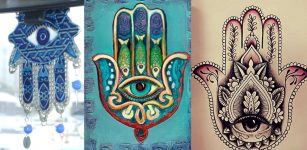 Ancient Symbol Hamsa: It’s Meaning And History Explained
Ancient Symbols | May 20, 2020
Ancient Symbol Hamsa: It’s Meaning And History Explained
Ancient Symbols | May 20, 2020 -
 Largest Viking-Age Building In Britain Has Been Found In Cumbria!
Archaeology | Feb 18, 2025
Largest Viking-Age Building In Britain Has Been Found In Cumbria!
Archaeology | Feb 18, 2025
